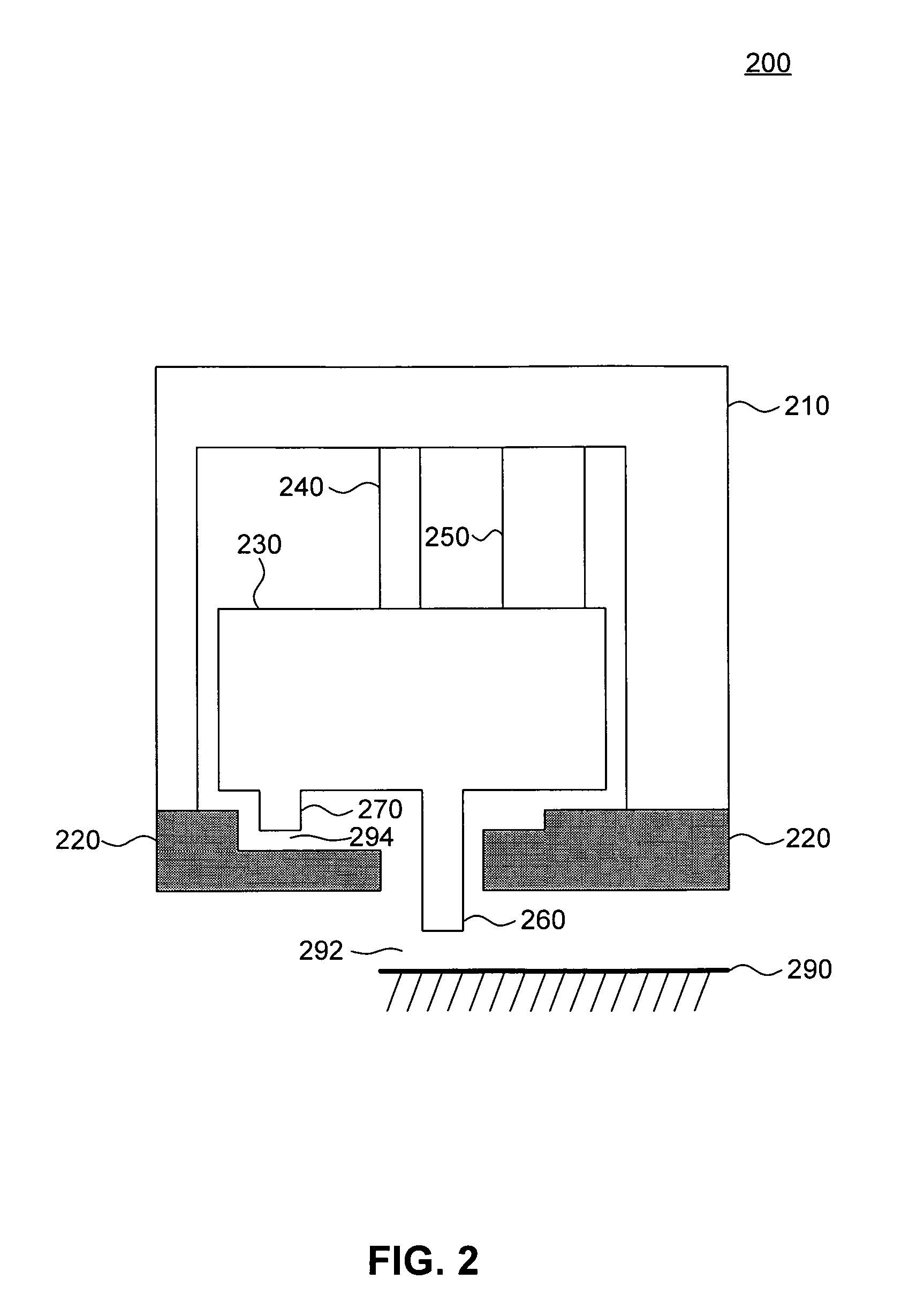Proximity sensor with self compensation for mechanism instability
a technology of proximity sensor and mechanism, applied in the field of proximity sensor, can solve the problems of significant challenges associated with creating a proximity sensor of such accuracy, serious shortcomings of sensors, degrade or ruin semiconductor quality, etc., and achieve the effect of reducing the impact of mechanical instability
- Summary
- Abstract
- Description
- Claims
- Application Information
AI Technical Summary
Benefits of technology
Problems solved by technology
Method used
Image
Examples
Embodiment Construction
[0019]While the present invention is described herein with reference to illustrative embodiments for particular applications, it should be understood that the invention is not limited thereto. Those skilled in the art with access to the teachings provided herein will recognize additional modifications, applications, and embodiments within the scope thereof and additional fields in which the present invention would be of significant utility.
[0020]Co-pending, commonly owned U.S. patent application Ser. No. 10 / 322,768, entitled High Resolution Gas Gauge Proximity Sensor, filed Dec. 19, 2002 by Gajdeczko et al., (“'768 patent Application”) describes a high precision gas gauge proximity sensor that overcomes some of the precision limitations of earlier air gauge proximity sensors. The precision limitations are overcome by the introduction of porous snubbers to reduce turbulence in the flow of gases and thereby increase precision. The '768 patent Application, which is incorporated herein ...
PUM
 Login to View More
Login to View More Abstract
Description
Claims
Application Information
 Login to View More
Login to View More - R&D
- Intellectual Property
- Life Sciences
- Materials
- Tech Scout
- Unparalleled Data Quality
- Higher Quality Content
- 60% Fewer Hallucinations
Browse by: Latest US Patents, China's latest patents, Technical Efficacy Thesaurus, Application Domain, Technology Topic, Popular Technical Reports.
© 2025 PatSnap. All rights reserved.Legal|Privacy policy|Modern Slavery Act Transparency Statement|Sitemap|About US| Contact US: help@patsnap.com



